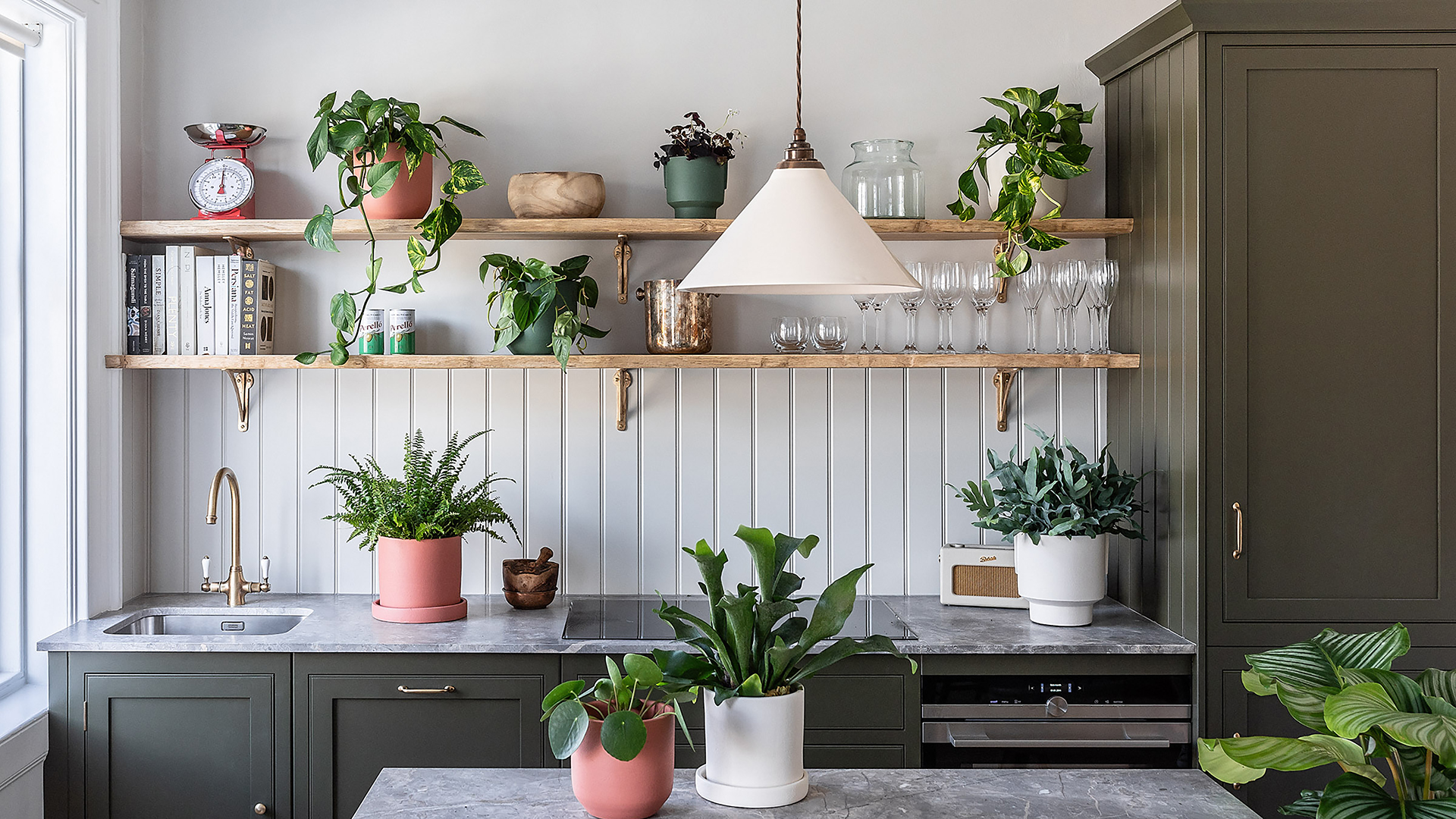How to get rid of gnats in plants – for optimum growth
Learn how to get rid of gnats in plants for healthy, thriving greenery


By learning how to get rid of gnats in plants, you can keep your greenery happy, healthy and thriving.
Not only will treating a gnat problem ensure your house plants are growing efficiently (an infestation can stunt growth), getting rid of gnats in the house will also eradicate a problem that is simply unpleasant and annoying.
Indoor plants are known to have a lot of mental and physical health benefits, such as improving your mood, lowering stress and improving work performance and focus. With Google searches for ‘houseplants’ increasing by 200 per cent over the last year, it's clear the trend for bringing the outdoors in is here to stay – but so might gnats be without these methods for deterring them.
How to get rid of gnats in plants
Just as getting rid of aphids is vital outdoors, finding efficient ways to get rid of gnats in plants indoors is a must.
We've tapped a host of experts to explain how to get rid of gnats in plants so your peace lilies and monstera have the best chance of blooming.
1. Water plants less often and from beneath
You may have to get rid of gnats in plants because you've provided the perfect breeding ground for them in your plant pots. So the best method to deal with them effectively is to eliminate their breeding habitat entirely.
'Fungus gnats love moist soil because that’s where fungus grows,' says Erin Marino of The Sill. 'If you have fungus gnats, you may be overwatering or not allowing your soil to dry out properly between waterings. Remember, moist soil means more fungus and more food for fungus gnats.'
Meanwhile, Andrew Gaumond of Petal Republic adds: 'The most common cause of fungus gnats is overwatered or saturated soil bases and warm, humid environments. As a general rule for most plants, it's prudent to allow the top 20% to 50% of top soil to dry completely before rewatering.
These gnats families (Mycetophilidae and Sciaridae) feed on small bits of fungi and decaying matter in the soil, which is present in any healthy soil medium.
And an expert at Greenery Unlimited adds: 'Populations of fungus gnats can quickly grow out of control, as their breeding cycle is very short, and although minor infestations are generally not harmful they can interrupt the serenity of keeping an indoor garden.'
Sub-irrigated planters – available on Amazon – are containers where there’s a built-in device to enable you to water the plant's roots directly, as opposed to watering the top of the planter. Because the top layer of soil dries out completely using this method, there is no place for the fungus gnats to be able to breed. These planters are often more suitable to the long term health of most indoor plants, too.
Simply letting the soil dry out completely between waterings will help too.
2. Deal with gnats' eggs
'To rid a plant of fungus gnats, both the larvae in the soil as well as the adult flies need to be targeted,' says Greenery Unlimited. 'This is in order to interrupt the life cycle. Simply dealing with the adults will not stop the eggs from hatching or the nymphs from growing into adults, and dealing with the eggs and nymphs in the soil will not stop the adults from laying more eggs.'
Adding a 2 inch layer of horticultural sand or diatomaceous earth on top of your plant's potting mix will help to prevent adult fungus gnats from laying eggs within the soil, says The Sill's Erin Marino.
3. Put out sticky traps
Adults fungus gnats are attracted to the color yellow and that’s the color sticky traps, also on Amazon, happen to be. Note that some adults may have already laid their eggs before becoming stuck to the trap, and more gnats may be hatching soon.
'Sticky yellow insect traps are a popular tool as well but avoidance is always better than the cure in plant care so it's worth monitoring your watering cycles carefully and not oversaturating the soil,' says Andrew Gaumond.
4. Deter baby gnats already in the potting mix
You can try incorporating Mosquito Bits into your waterings which is a natural larvicide that kills the larvae of flying insects – like fungus gnats.
The most effective way is to add the bits into your plants' water, letting it soak for 20 minutes which releases the bacterium. From there, you can give your plants a thorough watering and the larvicide will kill the larvae when they go to feed.
This is one of the most effective ways to control gnat infestation as it targets the pest at the stage it feeds the longest in its lifecycle.
5. Incorporate organic insecticide into watering
Erin Marino of The Sill likes to take action early: 'I like taking proactive preventive measures at the start of the growing season. I incorporate diluted insecticide or neem oil into my watering routine.
Her recommendations include: Organic Neem Oil and Bio Insecticide.
How do you kill gnats in soil?
To kill gnats in soil, Greenery Unlimited suggests using yellow sticky traps, commenting: 'We recommend trapping the adult flies with yellow sticky traps, and then treating the larvae in the soil with bacillus thuringiensis (a naturally occuring bacteria that eats the larvae) which can be found in Mosquito Bits and some other treatments.
'Alternatively you can treat the soil by applying a layer of sand or pumice that prevents the flies and larvae from going in and out which disrupts their life cycle.'
What is the fastest way to get rid of gnats?
The fastest method would be to repot the plant and provide all new soil which would remove the larvae.
Greenery Unlimited adds: 'It would be wise to also layer the soil with pumice after repotting to ensure any adult gnats remaining in the area don't reinfest the soil.'
What are gnats and how do they affect plants?
Fungus gnats are tiny bugs that look like fruit flies. If small bugs are flying around your plant, chances are they are fungus gnats.
Erin Marino of The Sill explains: 'Fungus gnats are 1/8 inch gray-ish adult flies with delicate wings and long legs. They are often found around the growing season (spring through summer), during favorable conditions, flying around the soil. Fungus gnat larvae, however, feed on organic matter within the soil.'
In small numbers, fungus gnats are pretty harmless to your plant and have no interest in you or your pets. But they are incredibly annoying.
Erin adds: 'They can do unpleasant things to your plants as well, like spreading pathogen spores, transferring infected tissues, and – after they’ve eaten all the fungus in the soil – they may start feeding on the roots of your plants.'
'Adult fungus gnats don’t damage plants or bite people but the larvae can damage roots and stunt plant growth if the infestation is allowed to continue unabated,' adds Greenery Unlimited.
Thankfully, there are multiple methods that are effective at dealing with fungus gnats and, with a little care and attention, they can be dealt with rather quickly.
Sign up to the Homes & Gardens newsletter
Design expertise in your inbox – from inspiring decorating ideas and beautiful celebrity homes to practical gardening advice and shopping round-ups.

Ruth Doherty is an experienced digital writer and editor specializing in interiors, travel and lifestyle. With 20 years of writing for national sites under her belt, she’s worked for the likes of Livingetc.com, Standard, Ideal Home, Stylist and Marie Claire as well as Homes & Gardens.
-
 Everyone is obsessed with vintage tiles right now – bring the nostalgic charm of this classic design feature into your home with our 5 design ideas
Everyone is obsessed with vintage tiles right now – bring the nostalgic charm of this classic design feature into your home with our 5 design ideasHonor the past with our favorite ways to decorate with vintage tiles, as suggested by interior design experts
By Eleanor Richardson Published
-
 'It's a fast reset button' – using the 1, 2 ,3 ,4, 5 decluttering method cleared my persistent mess in seconds
'It's a fast reset button' – using the 1, 2 ,3 ,4, 5 decluttering method cleared my persistent mess in secondsIt's easy, effective and so quick to do
By Ottilie Blackhall Published